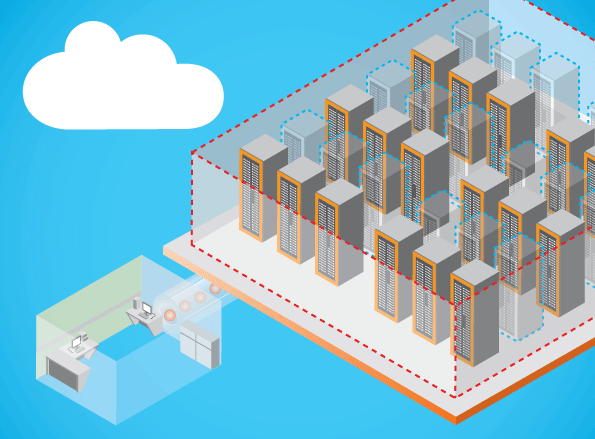部落格
主頁 » 部落格 » Data Center Infrastructure in a Software-Defined and Virtualized World
Data Center Infrastructure in a Software-Defined and Virtualized World
Posted on December 24, 2017 by Gento

When asked about the technology used in your daily business environment the things that typically come to mind are virtual, non-physical aspects. This is because businesses have become increasingly digital in recent years. However, IT will always rely on a strong foundation of hardware in order to support the software needed to virtualize IT resources. Thorough management of IT infrastructure is necessary to control operational costs and mitigate security risks. The following are aspects of technology that will continue to have a physical presence in data center infrastructure:
- Technology economics
- Business risk
- Operational scale
- Agility and innovation
- Security and compliance
Data center managers can serve their organizations more effectively by addressing these physical factors while pursuing the advantages of a virtualized infrastructure.
Technology Economics
The cost of acquiring and maintaining IT infrastructure has historically been a relatively small percentage of a business’s operational expenses. However, those costs have become more significant as more business functions are performed with specialized software, including sales, marketing, and support services. Due to the use across many different departments these costs aren’t restricted solely to the IT budget. Those departmental duties continue to drive the costs of maintaining physical infrastructure through their use of IT resources such as servers, storage, and network capacity, tend to affect the IT budget in the end.
Business Risk
The risks of hardware failures have become more significant as businesses become more dependent upon technology. A business’s financial state is now reliant on the continual uptime of their data centers operations. In addition to the loss of productivity, data center downtime prevents a business from earning revenue, jeopardizes customer relationships, and may even damage its brand. The most significant threats to a data center include power failures, loss of internet connectivity, and a network’s inability to recognize devices.
Operation Scale
Most business leaders generally consider growth to be beneficial, but growth can create its own challenges when it occurs too fast. Rapid growth requires data center managers to quickly scale the capacity of their infrastructure to accommodate the increase of demand for IT resources. However, the scalability of physical infrastructure is limited by factors such as floor space, power distribution, and cooling requirements.
Agility and Innovation
Businesses must be able to adopt relevant technologies quickly in addition to rapidly scaling their operations. For example, new technologies such as solid-state storage can dramatically improve a data center’s performance. Furthermore, specialized security appliances and converged systems can increase the integration between computing, storage, and network components. Agility is most closely associated with scaling up, but it may also require a business to scale down. A period of reduced infrastructure utilization requires IT staff members to detect such a condition and act on it quickly to reduce operating costs.
An IT department must be able to accommodate the increasingly rapid introduction of new technologies to their data center. This requirement places additional pressure on the data center manager to support supplementary hardware. The current trend towards converged infrastructure is particularly challenging since it increases the data center’s floor density.
Security and Compliance
The increasing reliance on IT makes security a central concern for all modern organizations. A breach can disrupt business operations and cause irreplaceable data loss. It can also permanently damage customer relationships and brand reputation if the breach becomes public knowledge. However, IT leaders fail to address physical security issues that leave a data center vulnerable to equipment theft, compromised data, and sabotage.
Physical security is also a requirement for many types of regulatory compliance. Auditors often require documentation when employees enter the data center to ensure that any unauthorized personnel hasn’t accessed sensitive information. This documentation can also establish that a business has exercised due diligence to prevent the disclosure of sensitive information.
To learn more about using software to define and virtualize data centers. Read the full white paper here.
Other Blog Posts
- 從資料中心失效對企業帶來的骨牌效應──探討感測器的重要性
- Posted on November 5, 2023
- 更高規格的電源要求加速AI市場成長與Raritan PDU的採用
- Posted on October 11, 2023
- 資料中心服務中斷次數減少,但停機的代價仍舊可觀
- Posted on September 20, 2023
- 意見調查:資料中心面臨能源使用與人力短缺困境
- Posted on September 20, 2023
- Raritan安全切換器:相容於Secure NIAP 4.0的桌上型KVM
- Posted on September 20, 2023
訂閱
近期活動
- New Zealand Cloud & Datacenter Convention 2022
- 3 November 2022, 9am – 4pm • Grand Millennium Hotel, Auckland, New Zealand
- Data Centre World Singapore
- 12th – 13th Oct 2022
- Korea Cloud & Datacenter Convention 2022
- 6th Oct 2022
- Philippines Cloud & Datacenter Convention 2022
- 4th Aug 2022
- JANOG50 Meeting Hokkaido
- 3th – 15th July 2022
Raritan最新新聞
- Legrand 使用兩大創新智慧型機架 PDU 重新活化資料中心產業
- Posted on May 1, 2023
- Exclusive interview丨How does Huizhou upgrade its manufacturing industry?
- Posted on December 2, 2021
- Raritan 發表 MasterConsole® 數位雙電腦切換器
- Posted on February 18, 2021
- Legrand Data, Power and Control Division Announced as Finalist in Six Categories at DCS Awards 2020
- Posted on November 9, 2020
- Raritan 新款智慧機櫃控制器 (SRC) 可智慧管理資料中心與關鍵任務設施的環境與安全性資訊
- Posted on November 9, 2020